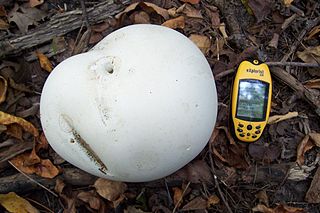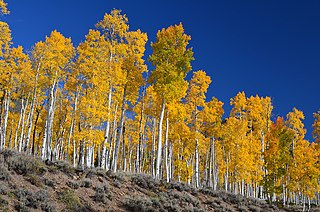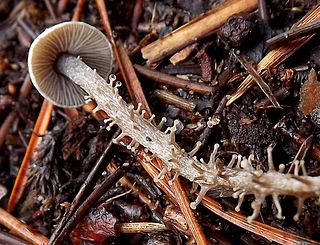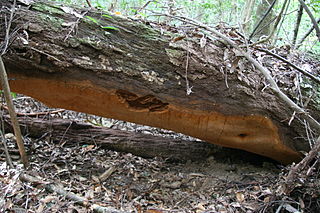| Species and family | Distribution | Dimensions | Weight | Comments |
|---|
| Phellinus ellipsoideus (formerly Fomitiporia ellipsoidea), Polyporaceae | Southern China | 10.85 m (35.6 ft) long by 84 cm (33 in) broad by 5 cm (2.0 in) thick. [1] [2] | Between 401.9 and 515.7 kg (886 and 1,137 lb). | This species was discovered by science in 2008. |
| Rigidoporus ulmarius (formerly Polyporus actinobolus), Polyporaceae. [3] | Western and Southern Europe. | At the Int'l. Mycological Inst. at Kew Gardens, London in 1996. 1.7 m (5 ft 7 in) wide by 1.47 m (4 ft 10 in) broad by 21 cm (8.3 in) top to bottom. [4] [5] | 284.5 kg (627 lb) in 1998. | It perished after a family of foxes took residence beneath it. [6] |
| Phellinus pachyphloeus (or Inonotus pachyphloeus), (Polyporaceae) | The Indian subcontinent. | A team headed by Manoj Kumar found a massive specimen of this species growing out of a Mango tree near Barotiwala, Dehra Dun, Uttar Pradesh, India which measured 4' 11.5" (151 cm) in width, 4' 8" (142 cm) in breadth and 22.5 inches (57 cm) top to bottom. [7] [8] | Weight not stated, but certainly less than the Rigidoporus above. | The owner of the land said that it was about 22 years old. |
| Bridgeoporus nobilissimus , Polyporaceae. | western Washington state, western Oregon and northwestern California. | 1.42 m (4 ft 8 in) wide by 94 cm (37 in) broad 91.5 cm (36.0 in) top to bottom. | 140 kg (300 lb). | Species discovered in 1949 by Sandoz brothers. Displayed in offices of Weyerhauser Lumber Co. for many years. [9] [10] |
| Serpula lacrymans , Polyporaceae | Originally native to Himalayan foothills, but now of pan-temperate distribution. | 3.66 m (12.0 ft) wide by 4.57 m (15.0 ft) top to bottom. Thickness not stated. | weight not stated. | Found growing from an Oak beam in a tunnel in Doncaster, Yorkshire, England in 1858. [11] [12] [13] [14] It is commonly called the "House Fungus". |
| Calvatia gigantea , Lycoperdaceae | Of cosmopolitan distribution. | One found in Herkimer County, New York in 1877 by Prof. R. Ellsworth Call was 1.63 m (5 ft 4 in) wide by 1.37 m (4 ft 6 in) broad by 24 cm (9.4 in) high. [15] [16] The most voluminous found in recent times was one at Thunder Bay, Ontario along the banks of the Kaministiquia River found by Adrian Karasiewicz in the summer of 2016. It was 81 inches (210 cm) in girth. [17] | Another, in Montreal, Quebec, found by Jean-Guy Richard in 1987, weighed 22 kg (49 lb), [18] and was 2.64 m (8 ft 8 in) in circumference [19] while another found in July 2012 by Christian Therrien of Sparwood, Canada claimed a weight of 25.9 kg (57 lb) which the accompanying photo seems to confirm. [20] | A large Puffball can produce up to seven quintillion (7,000,000,000,000,000,000) spores; [21] enough to dust all the world's dry land with 43,750 spores per square foot (per 30 cm X 30 cm). Still another puffball, found in 1857 by J. Dilwyn Llewelin near the coast of Glamorganshire, Wales measured 43 inches (108 cm) long by 38 inches (96 cm) wide and weighed 7.5 pounds (3.4 Kg). [22] |
| Fomitiporea expansa (Hymenochaetaceae) | Probably endemic to French Guiana and neighboring Suriname. | The type specimen measured over forty inches (over one meter) in width. [23] | Weight not stated. | This is a very recent discovered species; 2014. It was found near the Suriname border. |
| Chaga mushroom Inonotus obliquus [Polyporaceae] | Much of the Northern Hemisphere. This one in Quebec. | Circumference of 42 inches (105 centimeters). | 78.2 pounds (35.6 kilograms). [24] | Approximately 15 additional pounds (6.8 kilograms) was left on the host tree for regrowth, bringing the total weight to around 93 pounds (42.4 Kg). |
| Phlebopus marginatus , Boletaceae | Native to humid regions of Australia, New Zealand, Sri Lanka, Sumatra and Java. | One found in South Australia prior to 1934 had a cap (pilea) 61 cm (24 in) wide by 46 cm (18 in) broad. | same one (?) weighed 32.34 kg (71.3 lb) [25] | Another, at Hall's Gap, Victoria in 1939 weighed 28.6 kg (63 lb) but was 77.5 cm (30.5 in) across the cap. [26] The broadest specimen in recent years was one found on the farm of Mary Phillips at an unspecified location in Australia. Assuming her hand to measure 3 in (76 mm) across the knuckles, the cap is 25 in (640 mm) wide across its longest axis. [27] The most massive (heaviest) in recent years may be one discovered by Pamela McIntyre of Digby, Victoria in July 2012, which was found to weigh forty-four pounds (twenty kilograms). [28] Called the "Giant Toadstool" in eastern Australia, and "Salmon Gum Mushroom" in Western Australia. Much of the literature is under the older name Boletus portentosus. |
| Ganoderma lucidum , Ganodermataceae | China. This one Guangxi Province. | Cap 107 cm (42 in) wide. Stem short; only ±7 cm (±3 in ) thick. [29] [30] | By one report 14.9 kg (33 lb) but by another 7.45 kg (16.4 lb). | Fruiting body of G. lucidum can be a conk or a mushroom, depending on the orientation of the substrate. |
| Sparassis crispa , Sparassidaceae. | The mountains of Europe, always in pine forest. | One found in Mayres, France in October 2000. Dimensions not stated. [31] [32] | 28.8 kg (63 lb). | The Clavariaceae do not form caps. The spores are produced on stalagmite-like growths. |
| Grifola frondosa (Polyporaceae). | North Temperate Zone. | | One found by Hank and John Biscan of Mount Olive, Illinois weighed 63 pounds (28.6 kilograms). [33] | Called Sheepshead Mushroom. |
| The Giant Polypore (Meripilus giganteus) Polyporaceae. | Europe | Up to three feet (0.9 meters) wide, usually accompanied by smaller ones. [34] | |
| Macrocybe titans Tricholomataceae. | Found from northern Florida to southern Brazil. An outlier was recently found in Athens, Georgia, USA. | One found in Chiapas State, Mexico in July 2007 measured 68.8 cm (27.1 in) across the cap and also 68.8 cm (27.1 in) in height. Another in Costa Rica measured 1 m (3 ft 3 in) in width. [35] [36] [37] | The Chiapas specimen weighed 20 kg (44 lb). | This species was only discovered in 1980 (originally named Tricholoma titans). It was apparently not known to native peoples. That such a conspicuous and widespread species escaped notice for centuries constitutes a major anomaly. |
| Macrocybe gigantea (formerly Tricholoma giganteum ) Tricholomataceae. | Native to China, India, Pakistan, and Nepal. | A cluster of 5 or 6 joined at the base was found in Tengchong County, Yünnan Province, China in 2017. The largest was apparently 83.5 cm (32.9 in) in height while being 40 cm (16 in) in width. [38] [39] | Weight not stated. | It was discovered by 81 year old Liu Dingsheng who states that it grew in only three days. An attempt was made to transplant the cluster to a safer location. Commonly called the Giant Mushroom. |
| Bondarzewia berkeleyi , Bondarzewiaceae. [40] | Eastern North America, Europe, China, New Zealand and New Guinea among other places. Nowhere is it common. | Subterranean tuber (sclerotium) produces from one to five funnel-shaped concentric caps sharing a common stalk. Total width up to 1 m (3 ft 3 in). [41] [42] | Tuber and funnels can total up to 22.7 kg (50 lb). | One found in Lawrence, Kansas in 2008 was 90 cm (3.0 ft) wide and weighed 6.8 kg (15 lb), but it is not clear whether the sclerotium was included. [43] B. berkeleyi is called "Stump Blossom" |
| Cerioporus squamosus , Polyporaceae | Cosmopolitan distribution. | One found by a Mr. Hopkirk at Dalbeth, Scotland in 1810 was 226 cm (89 in) in circumference. [44] | It weighed 15.46 kg (34.1 lb). | . |
| Fomes fomentarius , Polyporaceae | Widespread in north temperate zone. | A specimen growing in France in 2008 measured 88 cm (35 in) in width by 62 cm (24 in) top to bottom. [45] | Weight not stated. | Formerly used as tender for flintlock rifles, and in medicine to control bleeding. Said to be "hard as wood". |
| Laccocephalum mylittae , Polyporaceae | Australia. | . | Sclerotium weighs up to 18.18 kg (40.1 lb). [46] | Each subterranean sclerotium produces several mushrooms above ground. |
| Laetiporus sulphureus , Polyporaceae | Widespread in Northern Hemisphere. | Approximately half of a specimen found by Ty Whitmore near Maysville, Missouri in October 2005 was 76 cm (30 in) wide by 41 cm (16 in) top to bottom. [47] [48] [49] | This portion weighed 25.46 kg (56.1 lb) | The other half fell into a creek and could not be recovered. |
| Termitomyces titanicus , Lyophyllaceae | Zambia, and the Katanga (Shaba) region of Congo (Zaire), in Central Africa. | The type specimen measured 63 cm (25 in) across the cap, and stood 56 cm (22 in) in height. [50] [51] | Weight not stated. | Others are stated to be up to 1 m (3 ft 3 in) in diameter. [52] A photograph was posted on April 19, 2016 on the respected "Words from the Wild" blogsite of a T. titanicus not less than 35 inches (88 cm) width across its greater axis. [53] This species was discovered by scientists in 1980 (a good year for mycology) as a common item in a native market. |
| Buglossoporus magnus (Fomitopsidaceae) | Apparently endemic to the Malay Peninsula. | In 1940 Prof. E.J.H. Corner found the first on a fallen log in the Bukit Timah Forest Reserve, Singapore, which was 23.5 inches (60 cm) in width. [54] | Weight not stated. | Extremely rare. Only collected three times, all on the Malay Peninsula. |
| Ola Be Phlebopus colossus (Boletaceae) | Eastern Madagascar. | 60 centimeters (23.5 inches) across the cap (pilea) and ten inches (25 centimeters) in height. [55] | 13 lbs (six kg). | |
| Choux Raves (Leucoprinius gongylophorus) [Agaricaceae] | Panama | 20 inches (51 centimeters) across cap by twelve inches (30 centimeters) in height. [56] | Weight not stated. | Also spelled Leucocoprinus. |
| Giant Funnel (Aspropaxillus giganteus) | North Temperate Zone. | Pilea (cap) up to 18 inches (45 centimeters) in width, [57] and about twelve inches (30 cm) in height. | Weight not stated. | |
| Boletus edulis , Boletaceae | Widespread in the northern temperate zone. | A specimen found in 1995 on the Isle of Skye, Scotland measured 42 cm (17 in) across the cap atop a stem 14 cm (5.5 in) thick. [58] | It weighed 3.2 kg (7.1 lb) | Common names include "penny bun" (Britain), "Cep" (France) and "Porcino" (Italy). |
| The Common, or Meadow Mushroom. ( Agaricus campestris ) | Throughout the Northern Temperate Zone. | In 1907 One was found in England which measured 4' 5" (135 centimeters) in circumference) equivalent to a width of 17 inches (42 centimeters). [59] | Weight not stated. | An Agaricus campestris grown in 1846 at Vitry near Paris, France and presented to King Louis Phillippe, was 14 inches (35 centimeters) wide, on a stalk 18.5 inches (48 cm) high and weighed 5 lbs 8 oz (2.5 kg). [60] |
| Morel ( Morchella esculenta) | Widespread in the North Temperate Zone. | One found by Kelly Young in Iowa was 15 inches (37 Centimeters in height and 14 inches (35 cm) in cap girth. [61] The measurements were certified by the Iowa Department of Natural Resources. | It weighed 1.5 pounds (700 grams) | |




















